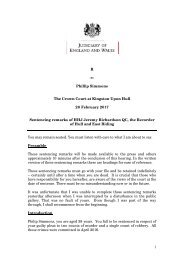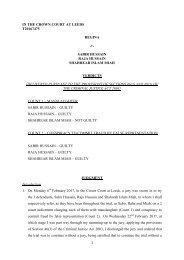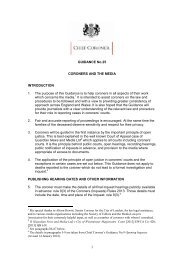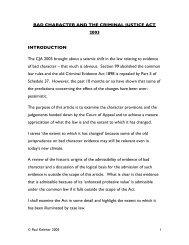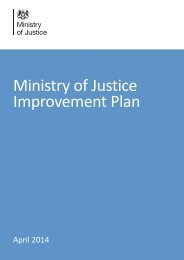HMP Doncaster
Doncaster-web-2015
Doncaster-web-2015
You also want an ePaper? Increase the reach of your titles
YUMPU automatically turns print PDFs into web optimized ePapers that Google loves.
Section 3. Purposeful activity<br />
3.17 Classrooms were equipped with a range of appropriate resources, including computers,<br />
reference books and dictionaries in several languages, and displayed suitable wall charts,<br />
posters and learners’ work.<br />
3.18 Prisoners received a good induction to their education programme, including an initial<br />
assessment of their English and mathematics abilities, and were placed on courses at the right<br />
level. Individual learning plans contained educational and personal targets, which were<br />
specific and measurable.<br />
3.19 Although prisoners completed many worksheets, not all were marked by tutors, and written<br />
feedback did not always guide prisoners to correct errors or improve their skills. Tutors<br />
sometimes intervened too readily to provide answers without challenging them to think for<br />
themselves.<br />
3.20 Tutors planned vocational training well, creating a positive learning environment. They<br />
recapped prior learning and used peer mentors effectively to help less-able prisoners<br />
progress, and used questioning to assess and develop prisoners' understanding. Tutors were<br />
skilled at helping prisoners to think for themselves when working out solutions to practical<br />
problems. Assessments were well planned and feedback was timely, making it clear what<br />
prisoners needed to do to improve. Vocational training tutors set prisoners clear targets for<br />
vocational unit achievement, but personal development targets were rare.<br />
3.21 Prison work was well organised with prisoners progressing to more complex tasks as they<br />
gained experience. In the textile workshop, prisoners worked to strict deadlines and high<br />
quality standards for external contractors. The horticulture department provided a range of<br />
varied work activities, such as landscaping, recycling materials to make planters and garden<br />
furniture, and general repairs.<br />
Recommendation<br />
3.22 Tutors should apply higher and consistent standards to the marking of learners'<br />
work and the feedback they provide to help them improve.<br />
Personal development and behaviour<br />
3.23 As well as the low attendance at education classes, particularly from many young adults (see<br />
paragraphs 3.2, 3.7 and main recommendation S43), prisoners often arrived late. Activities<br />
and classes also often finished early for security staff to return prisoners to wings. Prisoners<br />
who did attend education developed self-confidence and improved their social and<br />
communication skills. They found an enthusiasm for learning, recognising how improving<br />
their skills in English and mathematics would improve their chances of finding work and<br />
reducing the likelihood of reoffending. Learners took a pride in their work and were<br />
motivated to build on their achievements, and they were courteous to one another and staff.<br />
3.24 In prison workshops, prisoners developed good work attitudes and focused well on meeting<br />
quality standards for contractors. Their standards of behaviour in work and vocational<br />
training were good. Prisoners worked well in teams and showed respect to other prisoners<br />
and staff. In vocational training, prisoners developed good employability skills, such as<br />
working to tight timescales, alongside their main qualification. They gained confidence in<br />
solving problems through the tasks they needed to complete, as well as a good<br />
understanding of safe working practices, which they applied well.<br />
48 <strong>HMP</strong> <strong>Doncaster</strong>



